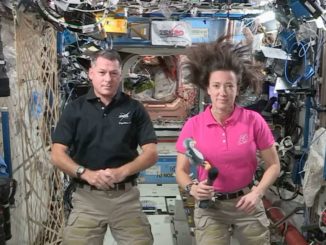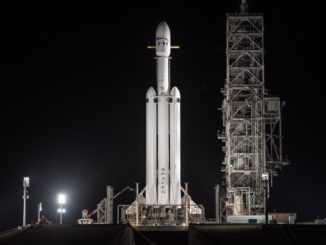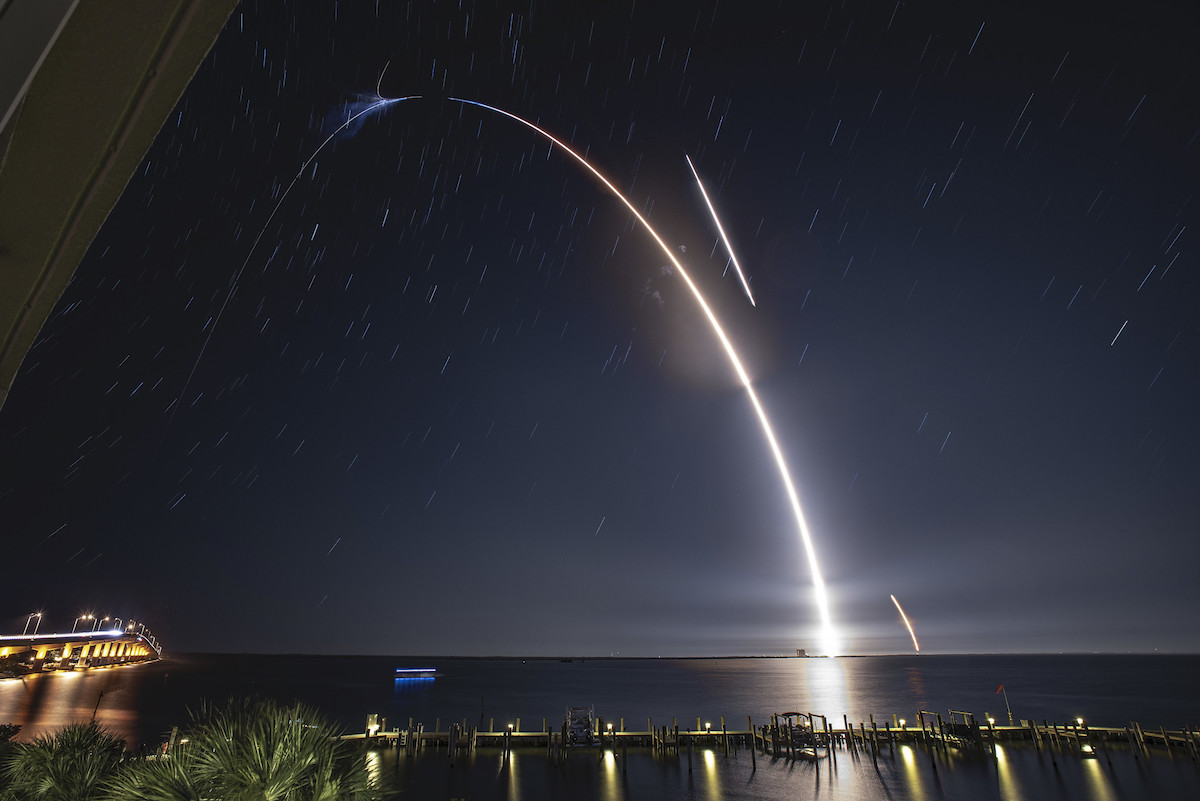
Delays have set up the possibility of up to three rocket launches this weekend from different pads along Florida’s Space Coast, including two SpaceX missions on Sunday that could set a company record for the shortest span between two Falcon 9 rocket launches.
But in the world of ever-changing launch schedules, numerous factors such as weather and technical issues could thwart launch plans this weekend.
The first in line is United Launch Alliance’s powerful Delta 4-Heavy rocket, which is scheduled to take off at 2:04 a.m. EDT (0604 GMT) Saturday from pad 37B at Cape Canaveral Air Force Station with a classified payload for the National Reconnaissance Office, which owns the U.S. government’s fleet of clandestine spy satellites.
There is an 80 percent chance of good weather for launch of the Delta 4-Heavy Saturday, according to the U.S. Space Force’s 45th Weather Squadron at Cape Canaveral. The publicly-released launch period extends until 6:25 a.m. EDT (1025 GMT), although the public period envelopes the actual launch window, which likely ends some time before then.
The Delta 4-Heavy was scheduled to blast off early Thursday, but ULA scrubbed the launch to evaluate an issue with a ground pneumatics system at the pad.
Due to the nature of its national security payload, the Delta 4-Heavy has priority on the U.S. military’s Eastern Range, which oversees safety, security and support functions for all launches originating from Cape Canaveral Air Force Station and the neighboring Kennedy Space Center.
The Delta 4-Heavy has three days reserved on the range, including Saturday and backup opportunities Sunday and Monday. Most commercial launches get two days at a time reserved on the range.
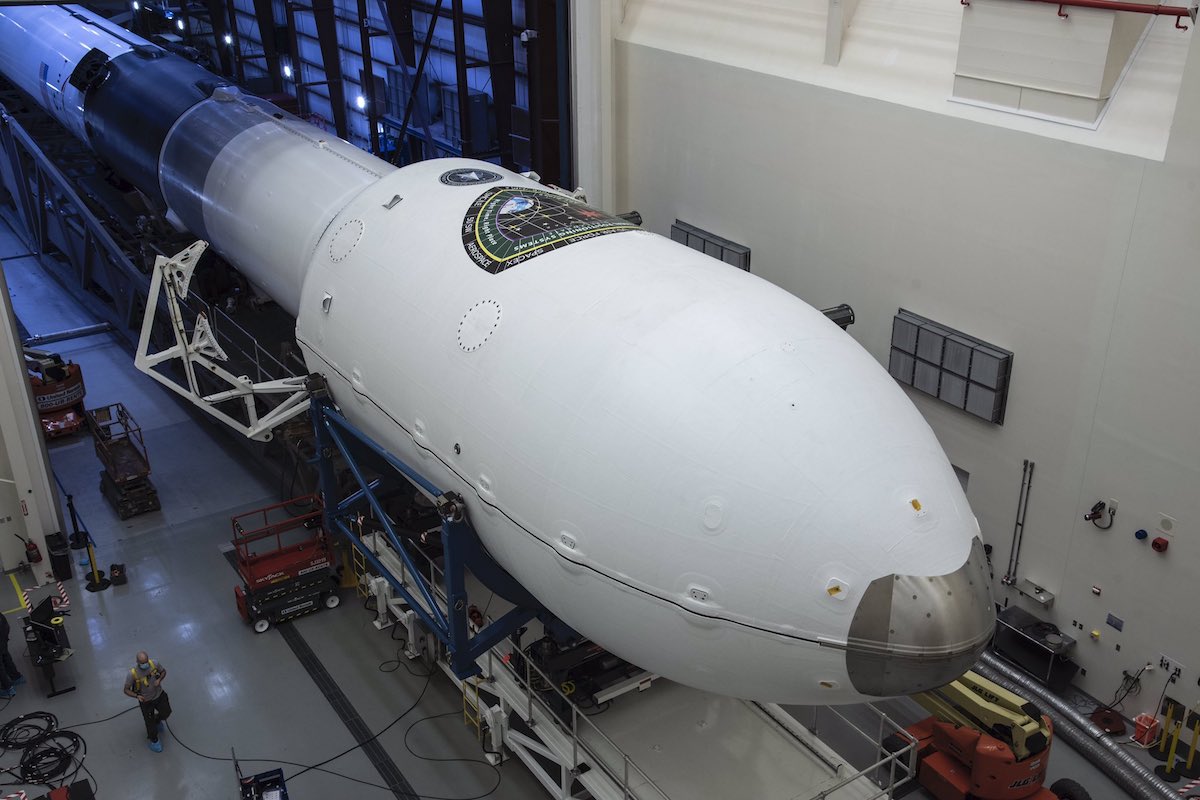
Assuming ULA gets the Delta 4 off the ground Saturday, SpaceX is gearing up for two launches as soon as Sunday, according to weather forecasts and hazard area information released by the Eastern Range.
Other sources also indicated the possibility of two SpaceX launches Sunday, but a company spokesperson did not immediately respond to a request for comment.
First, a Falcon 9 rocket is scheduled to take off from pad 39A at the Kennedy Space Center at 10:12 a.m. EDT (1412 GMT) with the next batch of approximately 60 Starlink satellites for SpaceX’s planned network to beam worldwide broadband Internet signals from space.
Around nine hours later, a different Falcon 9 rocket could launch from pad 40 at Cape Canaveral Air Force Station at around 7:18 p.m. EDT (2318 GMT) with Argentina’s SAOCOM 1B radar observation satellite.
SpaceX plans to land the first stage booster from the Starlink mission on a drone ship positioned in the Atlantic Ocean northeast of Cape Canaveral. The first stage from the SAOCOM 1B mission is due to return to Cape Canaveral Air Force Station for an onshore landing less than 10 minutes after liftoff.
Both launches will employ previously-flown Falcon 9 rocket boosters.
SpaceX plans to perform a test-firing of the Falcon 9 rocket for the Starlink mission Saturday on pad 39A. The company is not expected to conduct a test-firing of the rocket for the SAOCOM 1B mission.
As of Friday morning, both SpaceX launches remained on track for Sunday, but the weather forecast is iffy.
The official launch weather forecast for Sunday morning’s Falcon 9 launch predicts a 50 percent chance of favorable weather, with “considerable” mid-level and high-level clouds expected over Florida’s Space Coast, forecasters wrote Friday. The prime weather concern for the Falcon 9/Starlink mission is the potential of violating the thick cloud rule.
There’s just a 40 percent chance of acceptable weather predicted for launch of the SAOCOM 1B satellite Sunday evening, due to the “threat of evening thunderstorms and associated cloudiness over the launch area,” according to the 45th Weather Squadron.
If ULA and SpaceX — rivals in the U.S. launch business — pull off the feat of three launches this weekend, it will set a record for the shortest period in history with three orbital missions departing from Florida’s Space Coast.
If they both take off as scheduled, the dual Falcon 9 launches planned Sunday would also make history. The last time Cape Canaveral hosted two orbital launches in a shorter period of time was Nov. 11, 1966, when an Atlas-Agena and a Titan 2 rocket launched just 99 minutes apart from different pads, according to a launch log maintained by Jonathan McDowell, an astronomer at the Harvard-Smithsonian Center for Astrophysics who tracks global satellite and launch activity.
The Atlas lofted the Agena target vehicle used for docking by the two-man Gemini 12 crew, which launched on the Titan 2 rocket the same day.
Speaking with reporters earlier this week, Brig. Gen. Doug Schiess — commander of the 45th Space Wing which runs the Eastern Range — said the range has shortened the time it needs to reconfigure between missions.
“The launches are continuing to increase,” Schiess said. “That’s due in part to our national security space missions, and a huge part is our commercial missions.
“We want to be a range that’s resilient and reliable enough that any time anybody wants to launch, whether that’s a national security payload, a civil payload with NASA, or a commercial payload, that we’re able to do that,” Schiess said Tuesday.
At that time, the three launches — all with unrelated payloads — were planned a little more than 48 hours apart on Thursday, Friday and Saturday. Those schedules quickly changed with further delays in all three missions.
While noting the launch manifest required some “scheduling gymnastics,” Schiess lauded the range’s partnership with ULA and SpaceX to help make it happen.
The advent of the autonomous flight termination systems, which would be activated to destroy a rocket if it flew off course, helps the range streamline operations required to support missions from Cape Canaveral. SpaceX’s Falcon rocket family uses the automatic destruct systems, while ULA’s Delta 4-Heavy uses an older flight termination system that requires a manual command to be sent from a control officer on the ground.
ULA’s next-generation Vulcan Centaur rocket will have the autonomous flight termination capability, which allows the range to support launches with smaller teams. The automated safety system also allows the range to accommodate more than one launch on the same day.
Before the introduction of the automated flight safety system and satellite-based GPS tracking, a network of tracking radars were required to monitor each rocket’s flight path to ensure it stayed within predefined corridors. Coupled with concerns over aging range infrastructure, that often required a minimum of two days between launches from Cape Canaveral in recent decades.
“Autonomous flight safety systems allow us to be much faster at this, so as the new rockets come online from ULA and others that will have autonomous flight system (systems), that will allow us to be even better at this,” Schiess said.
“It really just comes down to a collaboration effort and the ability to schedule everything, change the network over,” Schiess said. “That’s also some of the things we’re doing for the range of the future, to build us an architecture that will change over much faster, plug and play with our telemetry, and things like that.”
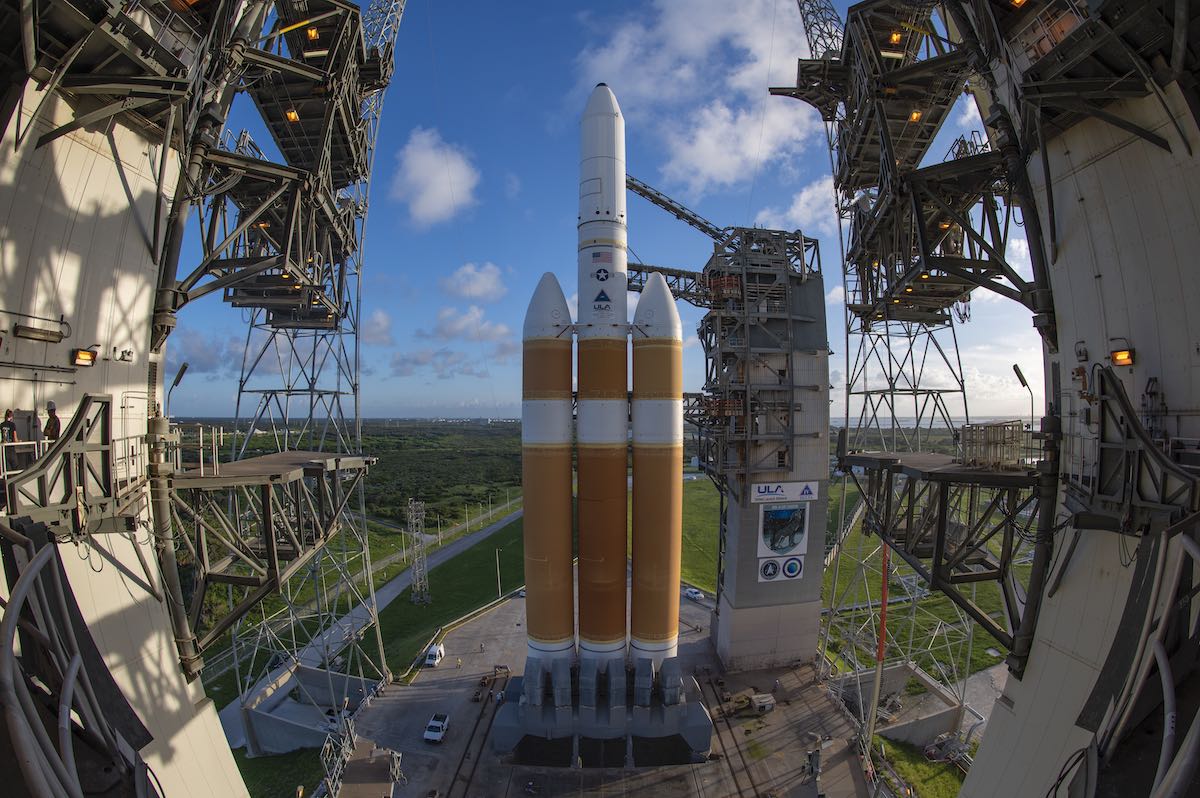
The SAOCOM 1B mission is noteworthy in another sense because it will be the first rocket launch from Cape Canaveral since 1969 to fly on a southerly course to deploy its payload into a high-inclination orbit the flies near Earth’s poles. The unusual trajectory will require the Falcon 9 rocket to first fly south-southeast from Cape Canaveral over the Atlantic Ocean, then bend its course back to the west in a right turn to skirt the coast of South Florida.
Known as a “dogleg” maneuver, the right turn will ensure the rocket’s impact point never crosses Florida in the event of an in-flight failure that causes the vehicle to crash back to Earth. The launcher will then head over the Florida Straits and Cuba before placing the SAOCOM 1B radar satellite into orbit.
Range safety officials began studying the southerly launch trajectory after a wildfire at Vandenberg Air Force Base — where nearly all the U.S. launches into polar orbit originate — threatened launch and payload processing facilities in 2016. SpaceX elected to use the polar launch trajectory from Cape Canaveral to allow the company to reduce staffing levels at Vandenberg during a period with few launches there, Gwynne Shotwell, company’s president and chief operating officer, told reporters last year.
SAOCOM 1B was previously scheduled for launch in March, but Argentine officials called off the mission due to concerns about the coronavirus pandemic. Engineers placed SAOCOM 1B in storage at Cape Canaveral until early July, when engineers returned to Florida from Argentina to finish readying the spacecraft for liftoff.
The launch of SAOCOM 1B was again delayed from late July because the range was not available for the launch, according to SAOCOM 1B team members. Sources said the delay was likely caused by range safety and overflight concerns with the classified payload mounted on top of ULA’s Delta 4-Heavy rocket at a neighboring launch pad.
The southerly trajectory required for the SAOCOM 1B mission will take the Falcon 9 rocket closer to the Delta 4 pad than for a typical launch toward the east.
Email the author.
Follow Stephen Clark on Twitter: @StephenClark1.

